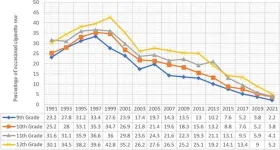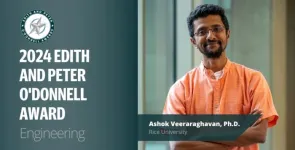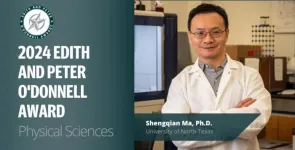Now, however, researchers at Dana-Farber Cancer Institute and the University of Trento, Italy, have developed a blood test, described in Cancer Discovery, that can reliably detect NEPC and differentiate it from CRPC-adenocarcinoma (CRPC-adeno).
NEPC is currently diagnosed using a biopsy of tumor tissue from a metastatic tumor site. Yet, it isn’t always clear to clinicians when to do a biopsy. Further, biopsies may be unreliable since metastatic tumors are often heterogeneous.
“As prostate cancer treatments get more effective, we expect the emergence of different types of treatment resistance like neuroendocrine prostate cancer that help them evade treatment,” says co-lead author Himisha Beltran, MD, associate professor of medicine, Lank Center for Genitourinary Oncology and the Division of Molecular and Cellular Oncology, Dana-Farber Cancer Institute. “We hope this blood test can be used by clinicians to determine if a patient is developing neuroendocrine prostate cancer.”
Approximately 10-15% of patients with metastatic prostate cancer develop NEPC. The transition involves a shift from cancer cells that are dependent on hormones called androgens to cancer cells that no longer even recognize androgens.
“They can stop expressing the androgen receptor,” says Beltran. “They shut down their hormone-driven identity and they turn on a new identity as a way to develop resistance to treatment.”
In previous research, the international team studied tissue samples from biopsies to identify the genetic and epigenetic changes related to this transition. They found that, across the whole genome, specific epigenetic changes, in the form of DNA methylation changes that switch genes on or off, distinguish CRPC-adeno from NEPC.
These epigenetic changes can be detected in blood because the body is constantly shedding fragments of dead cells into the bloodstream. Those cells come from all over the body, including from tumors. The fragments include bits of DNA, called cell free DNA (cfDNA), along with whatever epigenetic tags and structures were attached to them when the cell died.
Beltran collaborated with a computational team at the University of Trento, led by Francesca Demichelis, PhD, co-lead author on the study, to create a blood panel test, called NEMO (NEuroendocrine MOnitoring panel). “The test selectively probes cfDNA in blood plasma for relevant DNA fragments and measures their methylation,” says Demichelis. “Because the number of methylated regions needed to distinguish between normal, CRPC-adeno, and NEPC cells is small, the panel of genes sequenced by the test is minimal and efficient.”
NEMO reports two measures: the tumor fraction, a measure of disease burden based on the ratio of tumor DNA to normal DNA in the blood; and the tumor type, either CRPC-adeno or NEPC. The tumor type is reported as a score on a continuum because a patient’s cancer might be a mix of the two.
“It not only picks up the neuroendocrine phenotype but also can pick up subtypes in the middle, as tumors transition from one subtype to the other,” says Beltran.
Beltran’s team tested NEMO in several preclinical models of prostate cancer and in blood samples from multiple patient cohorts with known prostate cancer subtypes. The NEMO tumor type score identified subtypes with a high level of accuracy.
The team also evaluated NEMO in two clinical trials of patients with aggressive CRPC. The panel’s estimation of tumor fraction was consistent with other accepted measures of disease burden, suggesting that the test could be used to monitor response to treatment by revealing if a tumor is shrinking or not. This is especially valuable because, measures of disease burden, such as prostate-specific antigen levels, become unreliable when a tumor switches its identity to NEPC.
NEMO successfully identified patients with NEPC in the two clinical trials based on pathology reports. It also identified patients who had not been diagnosed with NEPC yet had signs of a transition to NEPC in their pathology reports.
“Now that we have robustly shown the accuracy of this panel test, we’re excited to apply it to clinical questions,” says Beltran. “We’d like to determine if this test can help us predict which patients respond to certain prostate cancer treatments, including precise treatments that target neuroendocrine prostate cancer.”
The information in a NEMO panel may also help clinicians select targeted treatments for patients or help investigators learn more about the disease. Further, adds Beltran, the test’s approach could potentially be applied to other forms of cancer to distinguish subtypes.
Longer term, Beltran and colleagues will take steps toward transitioning NEMO into a clinical test that physicians can order and use in practice.
Funding: The Prostate Cancer Foundation, National Cancer Institute, Fondazione AIRC per la Ricerca sul Cancro ETS, Cancer Research UK, United States Department of Defense, the Doris Duke Foundation, the Safeway Foundation, the V Foundation, and the Institute for Prostate Cancer Research.
About Dana-Farber Cancer Institute
Dana-Farber Cancer Institute is one of the world’s leading centers of cancer research and treatment. Dana-Farber’s mission is to reduce the burden of cancer through scientific inquiry, clinical care, education, community engagement, and advocacy. Dana-Farber is a federally designated Comprehensive Cancer Center and a teaching affiliate of Harvard Medical School.
We provide the latest treatments in cancer for adults through Dana-Farber Brigham Cancer Center and for children through Dana-Farber/Boston Children’s Cancer and Blood Disorders Center. Dana-Farber is the only hospital nationwide with a top 5 U.S. News & World Report Best Cancer Hospital ranking in both adult and pediatric care.
About University of Trento
The University of Trento was founded in 1962 and has always aimed at building alliance and reciprocal efficiency with Italian and foreign institutions and organizations. In 1982, the University (until then private) became public, with a statute that guaranteed self-government.
The Milan Agreement, signed in 2009 between the Government and the Autonomous Province of Trento (together with that of Bolzano and the Regional Authority), regarding the change to the special Statute of autonomy on financial regulations, gave the province new authority over the University. This is a further step forward in the development of the University and guarantees that the financial resources will be allocated and sufficient.
There are more than 16,000 students, about 600 professors and researchers and the same number of technical and administrative staff: these numbers indicate that the University can provide an ideal environment for study and research.
###
END








